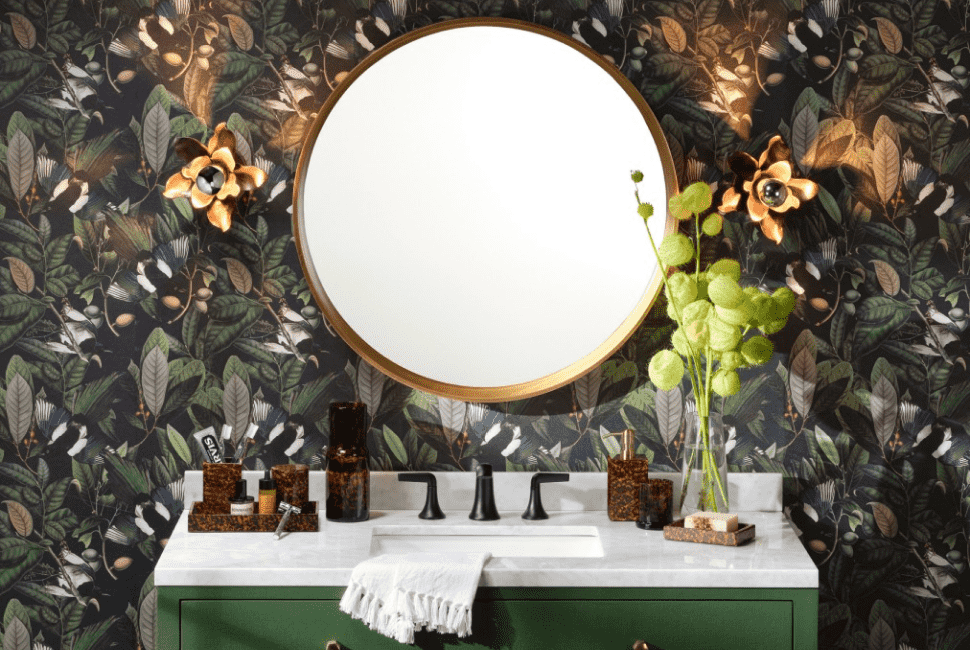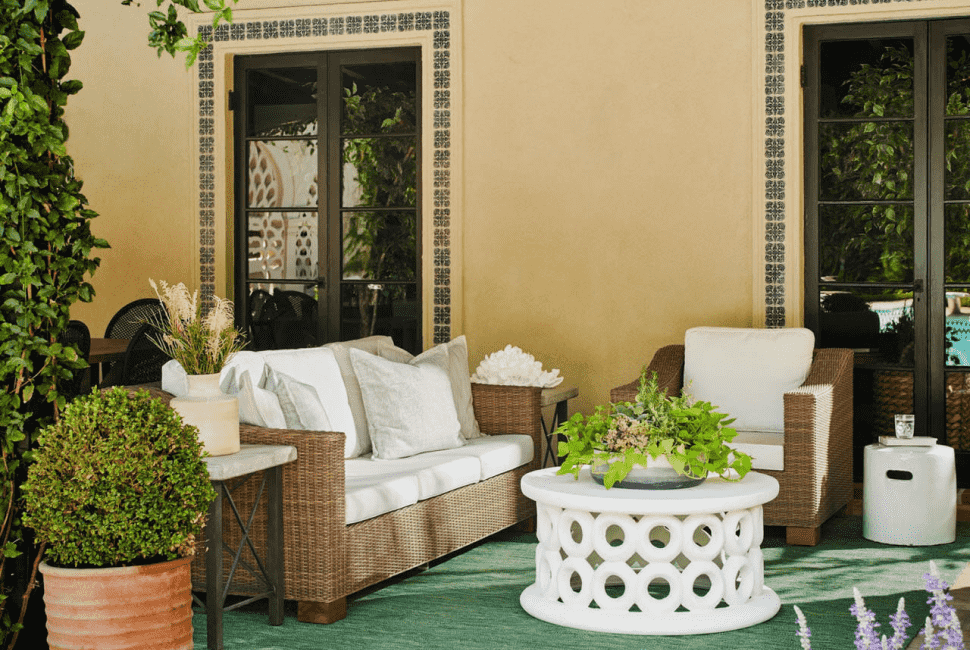Understanding Home Decor Fundamentals
Posted by Belle and June on November 1, 2024
Luxury isn't just about the pieces you choose, but also furniture layout, color coordination, and more. Effective interior design not only enhances the aesthetic appeal of a home but also promotes a sense of comfort and well-being. By thoughtfully selecting colors, furnishings, and decorative elements, we can create environments that reflect our personal style and meet our daily needs.
Achieving harmonious home decor involves exploring the balance between aesthetics and functionality. Discussing the fundamentals of interior design, identifying key focal points in a room, and understanding the concept of visual weight are all crucial elements. Whether you're a beginner or looking to refresh your space, this guide will equip you with the foundational knowledge to make your home truly yours.
Explore Our CollectionsInterior Design Basics
Sometimes, just knowing the basics can make all the difference. On a fundamental level, interior design is the art and science of enhancing spaces to create a healthier and more aesthetically pleasing environment. It involves aspects like spatial planning, color theory, and material selection, all aimed at achieving a cohesive and functional atmosphere.
The significance of interior design lies in its ability to influence mood and behavior, making it essential to consider how each element interacts to create harmony. Effective design balances beauty and practicality, ensuring that spaces are visually appealing, comfortable, and functional.
Key elements of interior design include:
- Color: Sets the mood of a room and influences emotions and perceptions. Understanding how to use color effectively can transform a space dramatically.
- Space: Refers to the dimensions of a room and how furniture and decor are arranged within it. Creating a sense of openness or intimacy relies on smart spatial planning.
- Form: Relates to the shape of objects and how they interact with the surrounding space.
- Texture: Adds depth and interest, enriching the sensory experience of a room.
- Pattern: This can energize a room or create a focal point, adding visual interest.
Together, these elements work synergistically to create a cohesive design that reflects individual tastes and lifestyle needs.
How To Incorporate Interior Design Basics
A successful interior design project balances functionality and aesthetics, ensuring every space serves its intended purpose while maintaining visual appeal. This balance is vital, as it impacts how we navigate our daily lives within those spaces. When designing a room, it’s essential to consider not only how it looks but also how it feels and functions. Incorporating practical ideas into your design approach will ensure that your space is both beautiful and livable.
For beginners looking to delve into interior design, a few essential tips can set the foundation for success:
- Understand your personal style: Take the time to explore different design inspirations and identify what resonates with you.
- Create a mood board: Capture the colors, textures, and furnishings you love in a visual representation to guide your design choices.
- Plan thoroughly: A well-thought-out design minimizes mistakes and maximizes the balance between aesthetics and functionality.
By starting with these basics, newcomers to interior design can create spaces that are both inviting and uniquely their own.
Take Action with Your Design Ideas!
Feeling inspired to enhance your home decor? Use the tips provided in this guide to experiment with different styles and arrangements, and see how small changes can make a big impact on your space!

Interior Design Styles
When it comes to interior design, selecting a style that resonates with your personal taste can significantly enhance the aesthetic appeal of your space. There are numerous styles to choose from, each with its unique characteristics and charm. Understanding these popular styles will provide you with a wealth of ideas for creating a home that reflects your personality and lifestyle.
Overview of popular interior design styles:
- Modern: This style emphasizes clean lines, minimal ornamentation, and a neutral color palette. Modern interiors often incorporate natural materials like wood and stone, focusing on functionality and simplicity.
- Contemporary: Often confused with modern design, contemporary style reflects current trends and changes over time. It embraces a mix of styles, textures, and colors, making it more dynamic and adaptable.
- Traditional: Characterized by rich colors, elegant furnishings, and ornate details, traditional design exudes warmth and familiarity. This style often includes classic architectural details, such as crown molding and wainscoting.
- Rustic: Emphasizing natural materials and earthy tones, rustic design creates a warm, inviting atmosphere. This style often features exposed beams, reclaimed wood, and stone accents, drawing inspiration from nature.
- Minimalist: Minimalist design focuses on simplicity and functionality, stripping away unnecessary elements to create a serene environment. This style is marked by a monochromatic color palette, clean lines, and a lack of clutter.
Choosing a Design Style
Every interior has distinct characteristics that can set the mood for a room. For example, modern and minimalist designs prioritize simplicity and functionality, while traditional and rustic styles evoke warmth and comfort through rich textures and materials. Contemporary design, on the other hand, allows for more experimentation with different elements, resulting in a more eclectic feel.
When choosing an interior design style that reflects your personal taste, consider the following tips:
- Assess your lifestyle: Think about how you use your space daily. A busy family may benefit from a more functional and durable design, while a single professional might prefer a chic, modern aesthetic.
- Identify your preferences: Take note of colors, textures, and furniture styles that resonate with you. Collect images from magazines, websites, or social media platforms to create a visual reference for your desired look.
- Experiment with combinations: Don't hesitate to mix elements from different styles. Combining modern and rustic pieces, for example, can create a unique, personalized space that reflects your individuality.
Ultimately, the right interior design style should resonate with your personal taste while achieving a harmonious balance between aesthetics and functionality. By understanding the various styles and applying these tips, you can create a home that truly feels like your own.

Focal Points: Understanding Small Details
In interior design, focal points are the central feature of a room that draws the eye and establishes visual hierarchy. It anchors the space and creates a cohesive design, whether it's a striking piece of art, an elegantly arranged piece of furniture, or an architectural element like a fireplace or large window. Effectively incorporating a focal point can elevate your interior spaces and enhance their overall appeal.
Having a focal point in a room is essential for providing clarity and direction, allowing for a smoother design flow. It creates balance among elements, preventing the space from feeling cluttered or disorganized. A focal point can also evoke emotions and set the mood; for instance, a vibrant piece of art can energize a room, while a serene landscape painting can promote tranquility. Establishing a clear focal point enhances both the aesthetic appeal and functionality of the space.
Here are some tips for creating an effective focal point in your space:
- Choose furniture, art, or architectural features: Selecting a standout piece is crucial. This could be a bold piece of artwork, a statement sofa, or an eye-catching light fixture. Ensure that this element is prominent and easily visible from various angles in the room.
- Use color and contrast to draw attention: Employing contrasting colors can help your focal point stand out. For example, a bright red chair in a neutral-colored room will naturally draw the eye. You can also use darker or lighter shades to create visual interest and highlight your chosen feature.
Focal Points by Room
Effective focal points can enhance the aesthetic and functionality of any room, creating a visually appealing centerpiece that draws attention. Each room offers unique opportunities to feature focal points that elevate its design. Here are a few examples:
- Living Room: A large piece of abstract art above the fireplace can become a captivating central feature.
- Dining Room: A stunning chandelier can serve as both a dramatic focal point and a functional source of lighting.
- Bedroom: A beautifully upholstered headboard can create a stylish focal point, while a gallery wall of personal photographs adds a personal touch.
By thoughtfully choosing focal points, you can ensure each room feels cohesive, inviting, and well-curated.

Visual Weight: Achieve Asymmetrical Balance
Visual weight refers to the perceived heaviness or lightness of an object in a design space, influencing how our eyes move through a room. Understanding this concept is essential in decorating because it helps create harmony and balance within a space. Visual weight plays a crucial role in guiding the viewer’s attention and ensuring that no single area feels overwhelmingly dominant or neglected. By skillfully managing visual weight, you can achieve a cohesive design that feels well-balanced and inviting.
Several factors influence visual weight in interior design:
- Color: The hues you choose can significantly impact visual weight. Darker shades tend to feel heavier and draw more attention, while lighter shades can create a sense of airiness. For instance, a deep navy wall behind a lighter-colored sofa will make the sofa feel more prominent, whereas a pastel wall may cause it to blend in more.
- Size: Larger items naturally command more attention in a space. A big, bold rug can anchor a room and create a focal point, while smaller items may seem insignificant. It's important to consider the scale of the furnishings and decor in relation to one another to maintain balance.
- Texture: The texture of materials can also affect how heavy they appear. Dense textures, such as a thick wool rug or a plush velvet sofa, tend to feel heavier, while smooth and light materials, like glass or linen, can add a sense of lightness to the room.
Balancing Visual Weight In Rooms
To effectively balance visual weight in a room, consider the following tips:
- Arranging furniture and decor: Be mindful of the placement of your items. Group larger, heavier pieces together and offset them with lighter elements to create a balanced look. For example, if you have a large sectional sofa, balance it with a few lightweight chairs or a small coffee table to distribute visual weight evenly.
- Creating symmetry and asymmetry: Symmetrical arrangements can provide a sense of stability and order, while asymmetrical designs can add visual interest and dynamic movement. For instance, placing matching lamps on either side of a sofa creates symmetry, while varying the heights and styles of decor items on shelves introduces an engaging asymmetry.
Balancing visual weight can be demonstrated in various spaces. In a living room, a large painting above a sofa can be complemented by lighter decor on the coffee table, distributing visual weight effectively. In a bedroom, oversized windows allow natural light, creating an airy feel that contrasts with a heavy bed frame or thick duvet. By being mindful of visual weight, you can decorate your home intentionally and harmoniously, ensuring each element enhances the overall design.
Explore Luxury Home Decor at Belle & June
Understanding the principles of interior design is essential for creating harmonious and inviting spaces. A focal point adds emphasis and visual interest, while visual weight shows how color, size, and texture influence balance. As you embark on your decorating journey, explore your personal style and apply these fundamentals, experimenting with colors, textures, and arrangements to transform your house into a home that reflects your unique vision.
Transform your spaces with furniture that combines comfort and cutting-edge design. Discover our full range of modern furniture at Belle & June and find the perfect pieces to enhance your home’s aesthetic and functionality. For more inspiration on creating a stylish and comfortable space, follow us on Facebook @BelleandJune and Instagram @belleandjune, or subscribe to our newsletter for exclusive tips and design ideas.

